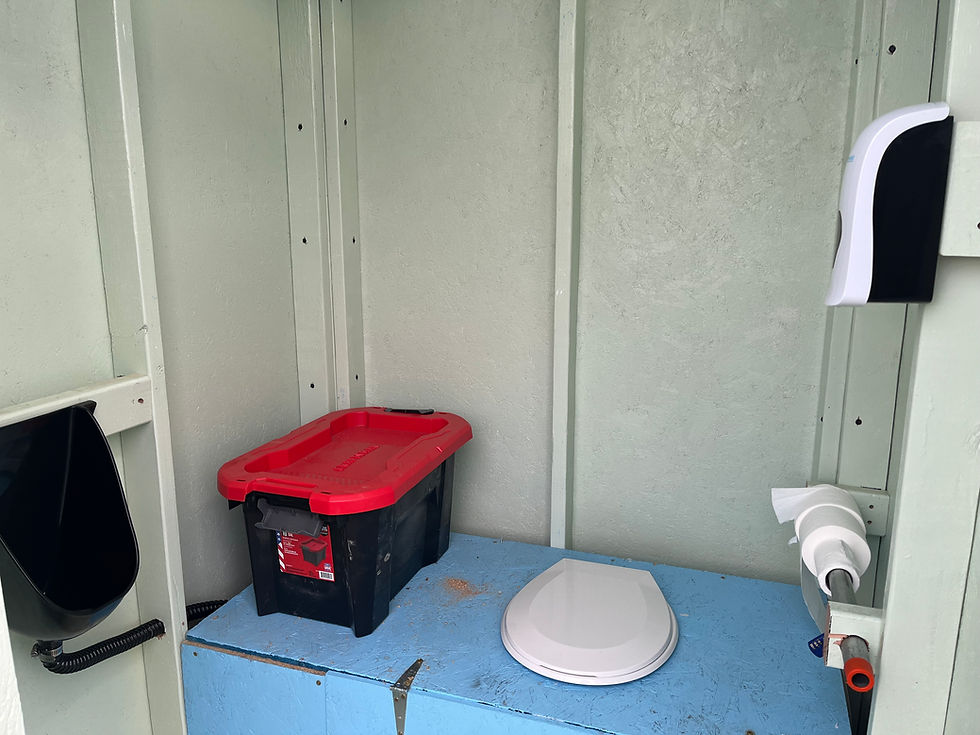Flushing Out the Myths: How Compost Toilets Work
- kaitlinlpettit
- Mar 10
- 2 min read
Updated: Apr 1

For the full version of this article, written by TE Board Member Avery Pope, check out our free Substack post or subscribe to our Patreon.
Compost toilets have been around for nearly two centuries, starting with Reverend Henry Moule’s 1800s "Earth Closet," which covered waste with dirt to prevent odor and promote decomposition. While modern plumbing largely replaced early composting designs, the concept never disappeared. Today, compost toilets are a practical, water-saving solution—especially in places where traditional sewage systems aren’t an option.

At Toilet Equity, we’ve refined the model to best serve our community in Western Colorado. We use three toilet designs: a standard wooden unit, a larger ADA-accessible version, and a converted port-a-potty. All share a key feature: they don’t rely on water or septic tanks. Instead, they collect users' deposits in bins beneath the toilet seat, which are regularly swapped out and transported to our compost site.
Inside, each toilet has a sawdust bucket—an essential part of the system. After each use, sawdust is added to cover deposits, preventing odors, deterring flies, and jumpstarting the composting process. Urine is collected separately in jugs, which not only helps keep the compost bins manageable but also provides much-needed nitrogen and hydration to our compost piles. Unlike some home composting toilets that divert urine away, we make sure every drop is put to good use in our composting process.

Because our toilets serve high-traffic areas, composting happens off-site. We maintain multiple toilets at busy locations, like the Resource Center in Grand Junction, to manage demand without constant bin changes. At our compost site, we carefully layer and aerate the piles to promote decomposition without methane production, turning waste into safe, usable compost.
Compost toilets aren’t just an alternative—they’re a sustainable, adaptable, and practical solution to sanitation challenges. Whether in a city, along a river corridor, or at a remote campsite, they provide dignity and hygiene while protecting the environment. We’re excited to keep expanding and refining our model to meet more communities’ needs.

Want to dive into the nitty gritty of our process? Check out the full blog post for free on Substack or subscribe to our Patreon for early access each month!
This article originally appeared in our March 2025 email newsletter.
.png)



Comments